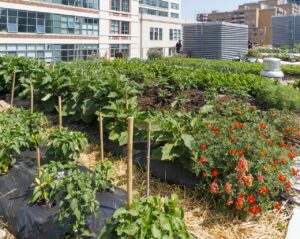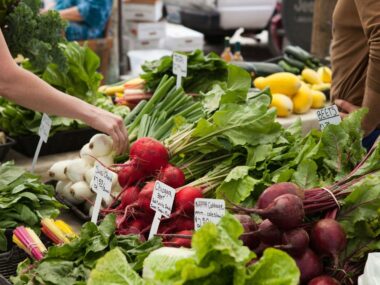- Introduction: As the world’s population continues to urbanize, cities face increasing challenges related to food security, environmental sustainability, and public health. Urban agriculture, the practice of growing food within urban areas, offers innovative solutions to address these challenges while fostering community engagement, promoting local food systems, and enhancing urban resilience. In this comprehensive guide, we will explore the diverse forms of urban agriculture, its benefits and challenges, and strategies for promoting its integration into urban planning and development.

Rooftop farm
- Forms of Urban Agriculture: Urban agriculture encompasses a wide range of practices, from rooftop gardens and community allotments to vertical farms and aquaponic systems. Rooftop gardens utilize underutilized urban spaces to grow vegetables, herbs, and ornamental plants, reducing heat island effects and stormwater runoff. Community gardens provide opportunities for residents to cultivate food collectively, fostering social cohesion, neighborhood revitalization, and environmental stewardship. Vertical farms utilize indoor farming techniques to maximize space efficiency and produce crops year-round, while aquaponic systems integrate fish farming with hydroponic vegetable production in a closed-loop ecosystem.
- Benefits of Urban Agriculture: Urban agriculture offers numerous benefits for individuals, communities, and cities as a whole. By producing fresh, nutritious food locally, urban agriculture improves food access and reduces reliance on long-distance transportation, lowering greenhouse gas emissions and enhancing food security. Engaging in gardening and farming activities promotes physical activity, mental well-being, and community cohesion, contributing to public health and social resilience. Urban agriculture also supports biodiversity conservation, urban greening, and climate resilience by creating green spaces, enhancing ecosystem services, and mitigating urban heat island effects.
- Challenges and Barriers: Despite its potential benefits, urban agriculture faces several challenges and barriers to widespread adoption and sustainability. Limited access to land, soil contamination, and zoning regulations restrict the expansion of urban agriculture in densely populated urban areas. Water scarcity, pollution, and pests pose challenges to urban farming, requiring innovative solutions for irrigation, soil remediation, and pest management. Economic viability and financial support are also critical considerations for urban farmers, who may face high land and operating costs, limited market opportunities, and precarious livelihoods.
- Policy and Planning Approaches: Integrating urban agriculture into urban planning and development processes is essential for realizing its full potential and addressing regulatory barriers and constraints. Municipal governments can support urban agriculture through supportive land use policies, zoning ordinances, and urban design guidelines that designate land for food production, protect agricultural spaces, and incentivize urban farming practices. Establishing partnerships between local governments, community organizations, and private stakeholders facilitates collaboration and resource sharing, promoting the development of sustainable urban agriculture initiatives.
- Education and Capacity Building: Building knowledge and skills among urban residents, farmers, and policymakers is critical for fostering a culture of urban agriculture and promoting its long-term sustainability. Educational programs, training workshops, and technical assistance initiatives provide aspiring urban farmers with the tools and resources they need to start and maintain successful urban agriculture projects. Incorporating urban agriculture into school curricula, community outreach programs, and vocational training courses empowers future generations to engage in sustainable food production and environmental stewardship.
- Innovations in Urban Agriculture: Innovations in technology, design, and entrepreneurship are driving the evolution of urban agriculture, offering new opportunities for sustainable food production and urban development. Advances in hydroponics, aeroponics, and aquaponics enable vertical farming and indoor agriculture in urban settings, utilizing controlled environments and precision agriculture techniques to optimize resource use and crop yields. Social enterprises and community-based initiatives are experimenting with alternative business models, such as urban farming cooperatives, community-supported agriculture (CSA) programs, and food hubs, to create more equitable and resilient food systems.
- Case Studies and Success Stories: Examining successful urban agriculture projects and initiatives around the world provides valuable insights and inspiration for scaling up urban farming efforts and overcoming common challenges. Case studies of urban agriculture in cities like Havana, Cuba, Detroit, Michigan, and Singapore highlight the diverse approaches to urban food production, from urban rooftop farms and vacant lot gardens to urban agriculture policy frameworks and food system resilience strategies. Learning from the experiences of pioneering urban farmers and innovative urban agriculture projects informs best practices and lessons learned for future urban agriculture initiatives.
- Conclusion:










